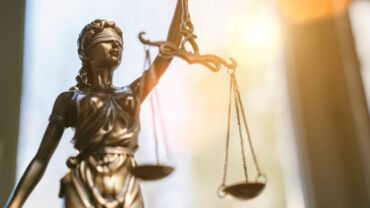Collaboration with internal peers outside a company's legal function may be the best way for General Counsel to help an organization manage its ESG investments
As a matter of course, General Counsel keep a keen eye on risk and ethics issues, and this along with their horizon scanning role, means they have an influential role in enabling their organization to navigate the complex waters of environmental, social & governance (ESG) issues.
I sat down with Andrea Harris, Group Chief Counsel at WPP, the multinational communication, advertising & technology company, to understand what advice she would give to her peers as they determine how best to maximize support for their organization’s ESG strategy.
“ESG is complex, and responsibility for a company’s sustainability and climate change agenda often sits across many functions, which makes this an opportunity for GCs,” Harris says. “While there are many stakeholders already involved — and even though Legal is taking on an ever-increasing workload — my experience is GCs and their teams can successfully navigate this and create impact at scale in their organizations.”
Harris is also a participant in General Counsel Sustainability Forum’s Leaders Programme and like the other GCs in the program, gains peer-to-peer insight and support to influence their companies’ sustainability initiatives.
Understand the businesses’ approach to sustainability
Companies are seeing their employees increasingly keen to be part of its sustainability agenda. This enthusiasm is to be applauded, but it needs focus to help deliver effective and large-scale impact.
For Harris, a crucial step that GCs and their teams can undertake is to really understand the business’ sustainability aims and strategy, how those link with the wider corporate strategy, and then focus on linking this with the legal team’s day-to-day work. GCs need to think about the impact of climate change across the whole value chain, from the suppliers to clients, Harris says, adding that GCs need to “think about how different business functions are impacted and how Legal is currently supporting these areas.”
Build cross-functional relationships
Another successful tactic used by Harris and that she suggests to her peers is building effective internal cross-functional partnerships. Because GCs are usually part of the executive leadership team and their teams are embedded within all reaches and levels of the company’s structure, they are in a unique position to do this.

Sustainability and ESG teams often have less resources and in the early days of their creation, could have fewer established relationships. This is an opportunity for Legal to partner with the Sustainability Team. GCs and their teams can help them push their ESG agenda out into the organization and support the ESG team with their ambitions. “With its connections Legal can play a key role in being a champion for its sustainability colleagues. You can be their eyes and ears, heart and soul out in the business,” she explains.
By fostering connections and partnerships within the business and facilitating shared learnings, Harris says she believes that legal teams can also limit ESG activities being siloed within the business. To support the silo-breaking, she urges making connections.
“The more GCs and their teams can network and share learnings between different parts of the business, the less chance there is of everyone having their own well-intentioned but small projects in silo and the greater the scale and impact they can create,” Harris says.
Support board and senior management
Many corporate boards now understand that sustainability is not simply a nice-to-have component but is actually a business-critical element. Indeed, Harris notes that WPP is very alive to this agenda. “The sustainability agenda is an issue the board has to think about, in the same we think about how our figures are doing, or our people,” she says, adding that the company’s CEO and executive management are driving the agenda and ensuring the right caliber of people are in place to achieve the organization’s goals.
In turn, Harris has been supporting the CEO and senior management by ensuring the correct governance structures are in place and that sustainability and climate change are standing agenda items at the corporate board level.
By keeping corporate directors up-to-date and putting in effective accountability and committee reporting structures, GCs can ensure ESG is embedded within the company’s thinking and focus.
Collaborate with peers
Finally, Harris advises GCs to join like-minded peers to stay fresh on current ESG trends and to find ways to maximize effectiveness in the corporate legal function’s advocacy for the enterprise ESG strategy.
For example, General Counsel Sustainability Forum’s program, which supports Harris and other global GCs in organizations such as Rolls Royce, Specsavers, National Grid, and Centrica in creating an impact on their company’s sustainability goals, is one such way to stay abreast of ESG developments.
“GCs and their teams are busy, and sustainability can get pushed slightly to the side as other priorities take over,” she says. “The Leadership Programme keeps you on track of what you were trying to deliver and helps you best support your sustainability colleagues.”
Another key benefit of gathering with GC colleagues across different industries who are facing similar challenges is knowledge-sharing. “Learning from my peers can be incredibly powerful as you not only see that it can be done but how it’s been done,” Harris states.
ESG will only increase in importance in the coming years, of course. And as Harris points out, there will be many opportunities for GCs to help to increase the effectiveness of their companies’ ESG strategies. Indeed, momentum begets momentum.







